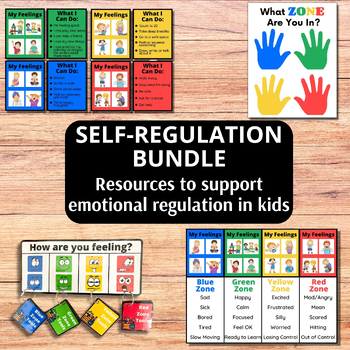Taming The Love Monster: Practical Tools For Emotional Regulation

Table of Contents
Understanding Your Emotional Landscape
Before you can tame the love monster, you need to understand its habitat. This means becoming acutely aware of your emotional landscape – your triggers, responses, and patterns.
Identifying Your Triggers
What situations, people, or thoughts consistently push your emotional buttons? Learning to recognize these triggers is the first step towards managing your reactions.
- Keep a journal: For a week or two, track your emotions. Note the time, situation, and your emotional response (angry, sad, anxious, etc.). Look for patterns. What situations consistently lead to intense emotions? Are there specific people involved?
- Identify underlying issues: Some triggers might stem from unresolved past experiences or deep-seated insecurities. Consider working with a therapist or counselor to explore these underlying emotional issues and develop coping mechanisms. They can help you understand the root cause of your emotional responses and develop personalized strategies for better emotional regulation and mental health.
- Observe your body: Pay attention to your physical sensations when experiencing strong emotions. Do you get a knot in your stomach? A racing heart? Increased muscle tension? Recognizing these physical cues can help you identify the onset of intense emotions before they escalate.
Recognizing Your Emotional Responses
Once you know your triggers, focus on identifying your emotional responses. Accurate labeling is crucial for managing emotions.
- Name your emotions: Instead of vaguely labeling an emotion as "bad," pinpoint the specific emotion: angry, sad, frustrated, anxious, etc. The more precise you are, the better you can understand and address the root cause.
- Practice mindfulness: Mindfulness involves paying attention to your present experience without judgment. Observing your emotions without getting swept away by them allows you to create space between the feeling and your reaction. This promotes self-regulation and enhances emotional intelligence.
- Understand the intensity: Become aware of the intensity of your emotional responses. Are you experiencing mild discomfort or full-blown overwhelm? Understanding the intensity helps you choose the appropriate coping mechanism.
Practical Tools for Emotional Regulation
Now that you're more aware of your emotional landscape, let's explore practical tools to manage those overwhelming feelings.
Mindfulness and Meditation
Mindfulness and meditation are powerful tools for improving emotional regulation and promoting emotional wellbeing.
- Regular practice: Even short daily sessions (5-10 minutes) can significantly reduce stress and improve emotional control.
- Guided meditations: Numerous apps and online resources offer guided meditations for stress reduction and emotional regulation.
- Mindful breathing: Focus on your breath as a way to anchor yourself in the present moment. This simple practice can help calm your nervous system and reduce emotional reactivity.
Deep Breathing Exercises
Deep breathing is a quick and effective way to calm your nervous system and improve emotional regulation.
- Diaphragmatic breathing: Focus on deep, slow breaths that expand your belly, activating the parasympathetic nervous system.
- Box breathing: Inhale for a count of four, hold for four, exhale for four, and hold for four. Repeat several times.
- Practice regularly: Make deep breathing a habit, practicing it several times a day, especially during moments of stress.
Cognitive Restructuring
Cognitive restructuring helps you identify and challenge negative or irrational thoughts that contribute to intense emotions.
- Identify negative thoughts: Become aware of the negative self-talk that fuels your emotional distress.
- Challenge those thoughts: Ask yourself: Is this thought realistic? What evidence supports it? What would I tell a friend who had this thought?
- Replace negative thoughts: Replace negative self-talk with more realistic and positive affirmations. For example, instead of "I'm a failure," try "I made a mistake, but I can learn from it." Consider cognitive behavioral therapy (CBT) to master these skills.
Building Healthy Relationship Skills
Healthy relationships are crucial for emotional well-being. Strong relationship skills can help you navigate emotional challenges with greater ease.
Setting Healthy Boundaries
Setting healthy boundaries is essential for protecting your emotional well-being.
- Learn to say no: Don't overcommit yourself. Prioritize your needs and say no to requests that overwhelm you.
- Communicate your needs: Clearly and assertively communicate your needs and expectations to others.
- Respect others' boundaries: Recognize and respect the boundaries of others.
Effective Communication
Effective communication is key to resolving conflicts and maintaining healthy relationships.
- Active listening: Pay attention to your partner's perspective without interrupting or formulating your response.
- "I" statements: Express your feelings using "I" statements ("I feel hurt when...") rather than blaming or accusing ("You always...").
- Calm communication: Practice expressing your emotions calmly and respectfully, even during disagreements.
Seeking Support
Don't hesitate to reach out for support when you're struggling.
- Trusted individuals: Talk to trusted friends, family members, or a mentor about your challenges.
- Support groups: Consider joining a support group for emotional regulation or relationship issues.
- Professional help: A therapist or counselor can provide personalized guidance and support in developing effective coping mechanisms for managing emotions and improving your relationship skills.
Conclusion
Taming the "love monster" – those intense emotions that can disrupt our lives and relationships – is a journey, not a destination. By understanding your emotional landscape, utilizing practical tools like mindfulness and deep breathing, and cultivating healthier relationship skills, you can significantly improve your emotional regulation and enhance your emotional intelligence. Remember that seeking professional support is a sign of strength, not weakness. Take the first step towards a calmer, more fulfilling life by actively practicing emotional regulation techniques and building stronger relationships. Start your journey towards better emotional wellbeing and tame your love monster today!

Featured Posts
-
 Couple Arrested Following Antiques Roadshow Stolen Goods Discovery
May 22, 2025
Couple Arrested Following Antiques Roadshow Stolen Goods Discovery
May 22, 2025 -
 Death Of Adam Ramey Remembering The Dropout Kings Vocalist
May 22, 2025
Death Of Adam Ramey Remembering The Dropout Kings Vocalist
May 22, 2025 -
 Virginia Gas Prices 50 Cents Cheaper Than Last Year
May 22, 2025
Virginia Gas Prices 50 Cents Cheaper Than Last Year
May 22, 2025 -
 Stijgende Huizenprijzen Abn Amros Prognose Ondanks Dalende Rente
May 22, 2025
Stijgende Huizenprijzen Abn Amros Prognose Ondanks Dalende Rente
May 22, 2025 -
 Understanding The 20 Cent Increase In Average Gas Prices
May 22, 2025
Understanding The 20 Cent Increase In Average Gas Prices
May 22, 2025
